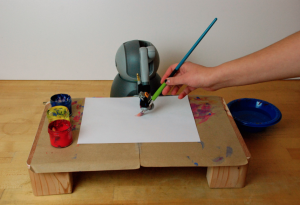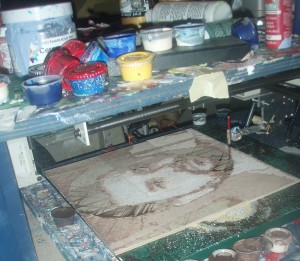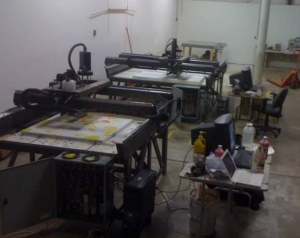Half Million Dollar Robotic Art Grand Challenge Seeks Technologist to Build a Classical Artist
Seattle – In the tradition of recent Technological Grand Challenges, RobotArt has pledged over half a million dollars in prizes over 5 years to competitors in a new Robotic Grand Challenge. This Grand Challenge is simple to describe but difficult to master, create a robot that paints with a brush like a classical master. The more skilled and creative the robot, the better.
With a deadline to submit artwork on April 14th, 14 Teams from around the world have already committed. Notable entries include multiple alumnus of the DARPA Grand Challenges that ultimately saw the successful creation of self driving cars including Carnegie Mellon, Cornell, UC San Diego, and Purdue. Notable international competition comes from Canada, France, Germany, and India.
Though initial registration has already resulted in a competitive field, the organizers of the 2016 RobotArt Competition seeks as many contributors as possible. To encourage more participation in the inaugural year, the competition has committed over $100,000 to a total of 16 cash rewards in 2 categories, Telerobotic and Fully Automated painting robots.
The two categories represent competing world views currently held by technologists working in the field of artificial creativity. Engineers interested in the Telerobotics Category typically see machines as collaborators with humans. When asked about why she was competing, Yeliz Karadayi of Carnegie Mellon University responded.
“I certainly hope that this competition will start a dialogue in which people understand that robots are best utilized as collaborators with humans, instead of as replacements for humans.”
While technologists with robots capable of producing completely automated artwork share an interest in collaboration, they are more focused on removing the human element from the equation. Oliver Deussen, one of the creators of eDavid, elaborates on this view,
“We are interested to what extent artistic craftsmanship can be implemented when doing machine painting – is it also possible to let the robot find his own style, judge and improve his result autonomously? Fully automatic processes also have the beauty of sometimes getting the unexpected.”
While some teams are choosing to concentrate on one of the two categories most are capable of operating in with or without human assistance such as the aforementioned eDavid and Pindar Van Arman’s cloudPainter, both of which can collaborate with humans and paint completely on their own.
Regardless of the category each team chooses to compete in, it is notable that this competition requires that all artwork be painted with an artist’s brush. When event sponsor Andrew Conru was asked why he was specifically limiting entries to brush painted art he responded,
”One of the first signs of human culture was our ability to express ourselves with images. From ancient cave paintings to abstract art, physically generated images have been a universal way for humans to express and communicate”
While it is unclear what to expect from RobotArt’s inaugural year. Speculation of its long term significance can be summed up in the success of previous Robotic Grand Challenges. Stanford and Carnegie Mellon University successfully created self driving cars for the 2005 and 2007 DARPA Grand Challenges. Less than 10 years later some of that technology has found its way into commercially available vehicle. Tesla already has a nearly autonomous mode with Elon Musk estimating that it will be fully self driving by 2017. Does this mean that we are just 10 years away from fully creative machines?
With two months left to register there are currently more cash rewards than registered competitors for the 2016 RobotArt Competition. For more information on how to join the competition and specific rules, visit robotart.org.
—————————————-
For more information about the event feel free to contact its organizer and sponsor
Andrew Conru, Ph.D.
Entrepreneur, Engineer and Artist
abconru at yahoo.com
Competitors Available for comment include
Oliver Deussen
Konstanz, Germany
University of Konstanz
eDavid
oliver.deussen at uni-konstanz.de
Pindar Van Arman
Washington D.C.
George Washington University
cloudPainter
pindar.vanarman at gmail.com
You are free to use following images and more are available upon request:
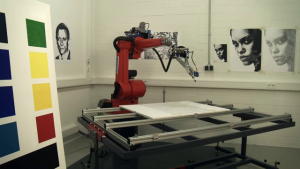 University of Konstanz’s Entry – eDavid
University of Konstanz’s Entry – eDavid
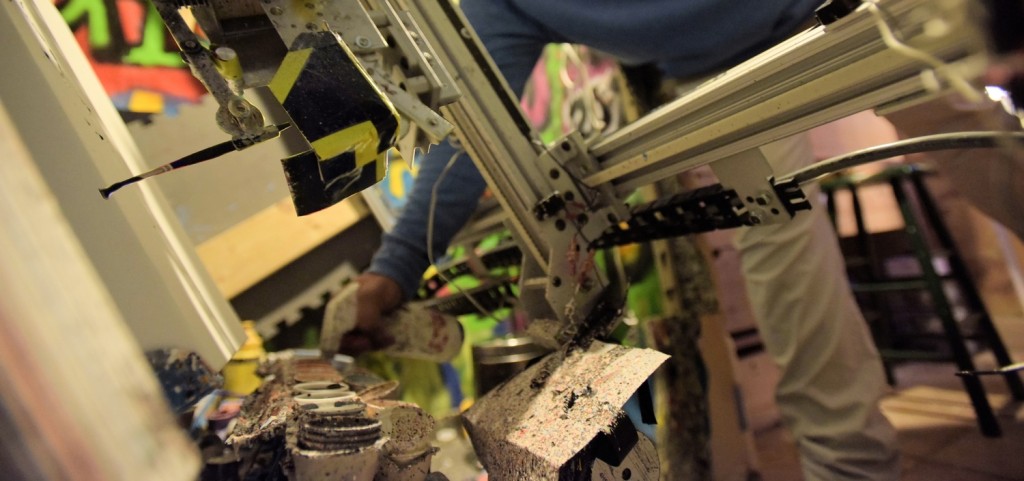 George Washington University’s Entry – cloudPainter
George Washington University’s Entry – cloudPainter
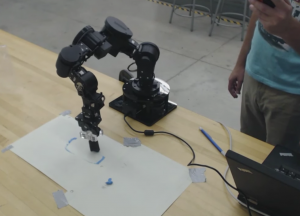 Rose-Hulman Institute of Technology Entry
Rose-Hulman Institute of Technology Entry
